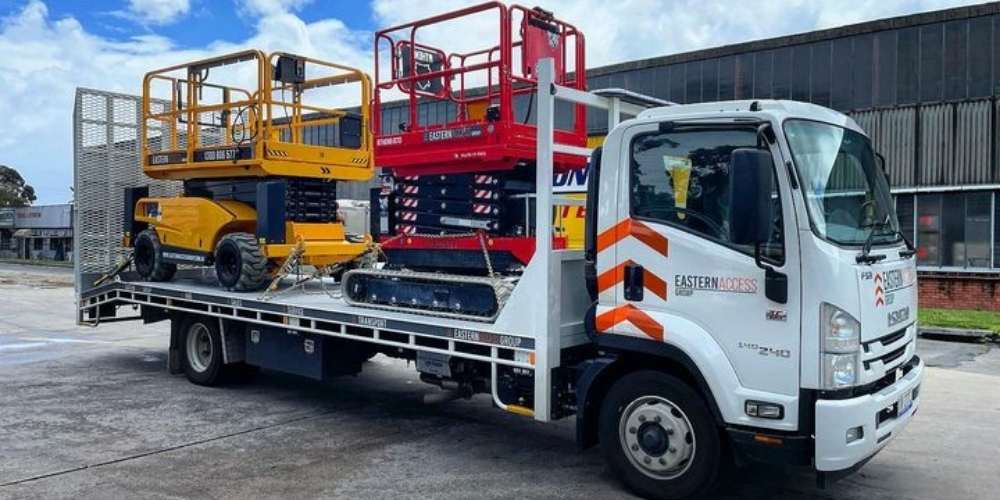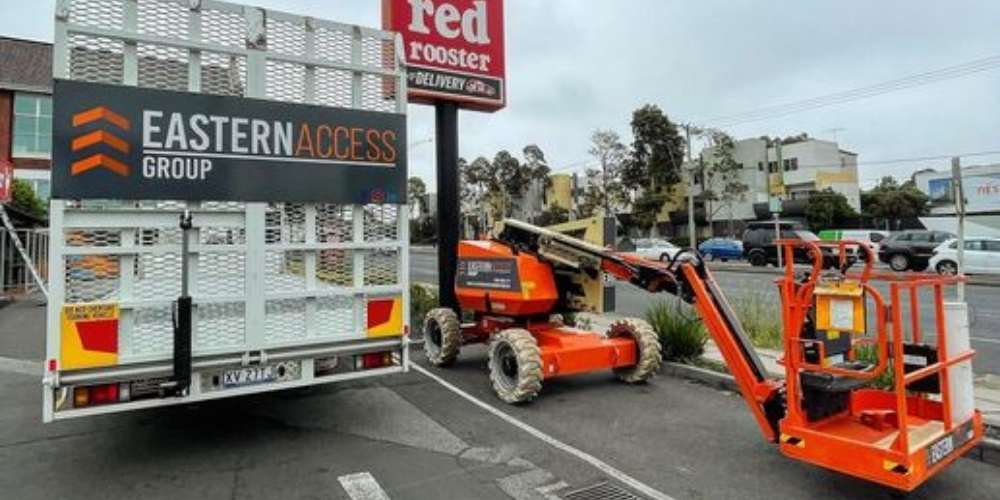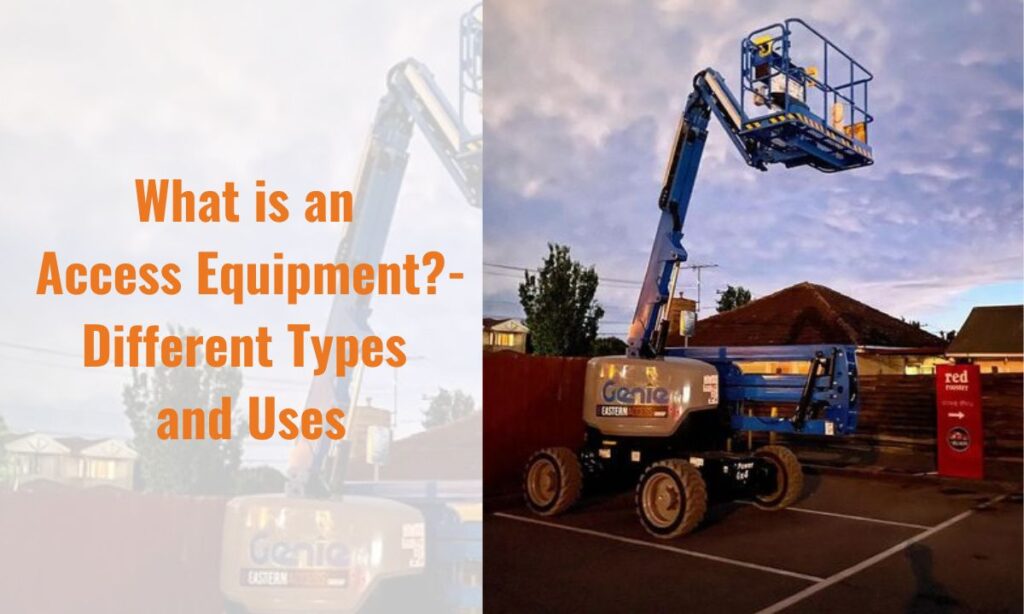Access Equipment - Different Types and Uses
Any equipment that enables personnel to work at a height securely is referred to as access equipment. Maybe you’re a roofer if you work in the construction industry? Builder? Alternatively, do you implement street lighting for the local council? Or you might need some ideas before reaching out to access hire company to seek an aerial work equipment service?
Whatever your line of work, one or more of your everyday responsibilities may involve performing maintenance or service work at a considerable height with a mechanical instrument. Access equipment is the final element you need to guarantee elevated jobs are done safely and without any difficulty.
Let us give you a brief background and understanding of access equipment and its usefulness in doing elevated work.
Table of Contents
What is an Access Equipment?

Different Types of Access Equipment
Access equipment is designed to enable the user to work securely at heights. Numerous entry points were created to serve a wide range of needs. Although access equipment has been specifically built to allow a broader and stronger stance, working at heights can be hazardous and pose various threats to workers’ health and safety.
Workers can work at various heights using access platforms, which can be used either permanently or temporarily. They can be used for duties ranging from grain processing to maintaining utilities and are available in various designs. A stable, well-built access platform can increase employee confidence and risk workplace accidents and equipment damage. Businesses frequently have to consider the use case when deciding between different types of access platforms.
Different Types of Access Equipment
1. Aerial Work Platform
Aerial work platforms (AWP), also known as mobile elevated work platforms (MEWP), are essential for safe access to heights and are used in various work applications. For chassis weighing between 3.5 t and 60 t, modern models offer non-insulated and insulated platforms with operating heights of between 13 m and 90 m.
These platforms consist of an elevated working platform typically powered by a mechanical device and are thus optimally adjusted to the appropriate operating range. Working from one of these devices demands a high safety awareness because they frequently reach heights of more than ten meters. Despite the necessity of the platform activities and actual elevation control, many of these are managed by a single person.
2. Articulating boom lifts
Lifts with articulating booms have increased uptime, longer run times, and higher productivity. These machines were made with less periodic maintenance requirements, a calmer working environment, reduced dependence on hydraulic lubricants, and zero emissions. Longer runtime, improved uptime, and more productivity are all features of powered mobile elevating work platforms.
3. Telescopic boom lifts
The lifespan of telescopic boom lifts is increased. Superior performance is provided by the equipment’s four-wheel drive, strong diesel engines, and high torque drive motors. They are simple to use, maintain, and repair.
Compared to other types of aerial platforms, modern telescopic booms provide the most significant horizontal outreach. In industrial and construction use, it is also appropriate for inaccessible locations.
The drive speed required to navigate the working site and get to the work area is now also built into telescopic boom lifts. A 30-foot (9.1 m) jib boom and superb up-and-over capabilities allow for a maximum horizontal reach of approximately 100 feet (30.5 m), which is impressive in terms of distance and lift height.
4. Vertical mast lifts
These characteristics are standard across the range for vertical mast lifts. They include a designated forklift pocket, 25% gradeability, a direct electric drive with maintenance-free AC motors, and the Screen onboard diagnostic.
The platform expansion offers more room. Modern models include an outstanding zero-tail swing that makes them incredibly maneuverable and a jib that allows work over obstructions. They are highly portable, easy to use, and have reasonable uptime because of their lightweight design. Each model has several add-ons and choices that let you tailor the machine to your specific needs. Due to their tiny working envelope for turning around corners, vertical mast lifts are made to make work faster and easier.
5. Push around lifts
Push-around lifts can be readily moved by hand or towed by a trailer or a vehicle. Rubber stabilizers and non-marking tires shield the floor’s surface. They are small enough to fit in elevators and pass through doors.
One person is capable of completing the quick lifts setup. Thanks to its small weight, it can be used on even the most delicate soils. Because of its small size, it can fit through doors and elevators.
Various alternatives and accessories are available to tailor the lift for every application. They are affordable due to their adaptability and customization to your workplace’s requirements. They are portable devices that are quick to erect and easy to use. These lifts are ideal for lifting a single individual who has to perform construction or maintenance.
6. Trailer-mounted boom lifts
Outriggers that fold down and are hydraulically propelled include trailer-mounted boom lifts and highly maneuverable articulating booms. These booms installed on trailers are effective and affordable. They are also simple to transport and operate both inside and outside.
This towable lift’s completely proportional hydraulics and up-and-over access make it highly maneuverable. Auto-levelling outriggers and a powered platform rotation are included as standard.
A highly portable option that may be readily transported from one location to another is a trailer-mounted boom. They are electric-powered and can work indoors or outdoors on uneven ground, thanks to their outriggers. Quick setup is made possible by hydraulic outriggers with automated levelling. They come in telescopic or articulated forms.
7. Mobile access tower
Mobile access towers offer outdoor and indoor access solutions and are widely utilized in buildings and construction.
Mobile scaffolds are helpful when a safe and steady working platform is needed. They are ideal for installation jobs, maintenance tasks, or temporary access because they are lightweight.
A movable access tower is an incredibly versatile tool that provides a stable and secure working platform in several settings and for various heights.

How To Pick The Right Access Equipment For You?
Before you decide whether to work at any height, consider the health and safety requirements. Ensure the risks are adequately assessed and controlled, ensure the people managing the job are competent and, crucially, choose the right access equipment for the task and environment.
Consider the health and safety regulations before deciding whether to work at any height. Choose the appropriate access equipment for the task and environment, ensure the hazards are appropriately assessed and managed and confirm that the job managers are qualified.
- Choose access equipment that is fit for the height of your elevated job.
- To save time and reduce the time you have to travel up and down, you should always choose equipment that will allow you to simultaneously place all of the necessary tools on the platform.
- Consider the state or condition of the ground you will be working on before choosing your equipment.
- Always conduct a risk assessment of the area before choosing which equipment you will use.
- Pick a piece of access equipment that is the right size for your site and has the correct dimensions.
Key Takeaways
Warehouses, factories, and construction sites are just a few places where access equipment is used. A worker can accomplish their specific job duties safely and effectively without fear of significant injury and requires high-quality, dependable equipment due to the risks associated with operating at a height. Utilizing this equipment will also help your workplace run more effectively and efficiently, enabling staff to perform their jobs as efficiently as possible and reach new heights.

